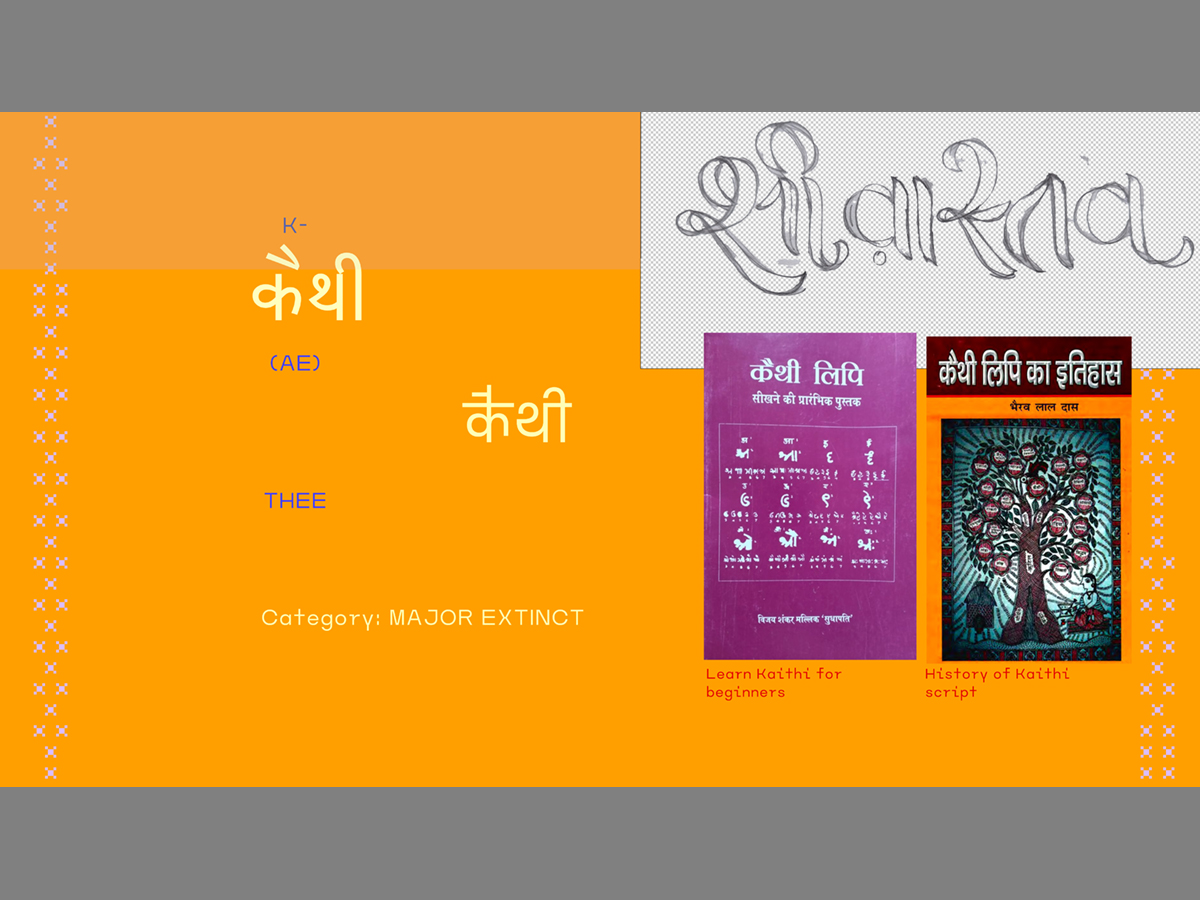Anmol Shrivastava
Assistant Professor
Illinois State University
Kaithi (KAE-THEE), also known as Kayathi or Kayasthi, is a script that was once widely used in northern India. Now classified as a “major extinct” script, Kaithi once flourished alongside companion scripts like Devanagari and other major Indian scripts of today. The name Kaithi is derived from ‘Kayastha’, a cultural group known as “scribes”. I am a Kayastha.
Script revival is crucial to colonized cultures, serving as a means of reclaiming and preserving cultural identity. It fosters pride, heritage transmission, and resistance to cultural homogenization, empowering communities to rebuild unique identities and celebrate their heritage.
This presentation explores the intersection of design and ancestry through a personal journey to revive the nearly extinct Kaithi script, historically used by my ancestors, the Kayasthas. It will demonstrate how design can become a powerful tool for historical and cultural revival, offering a unique perspective on the interplay between design, identity, and heritage.
By delving into sparse historical documents of Kaithi and sharing a personal journey of self-learning the script, the presentation will showcase current and upcoming projects that combine typography, type design, lettering, poster design, and embroidery. It will explore projects aimed at broadening the reach of this nearly extinct script by making Kaithi easier to self-teach. This presentation will illustrate how design can play a crucial role in reconnecting with and reviving our ancestral roots, fostering a deeper sense of identity and belonging.
This design research is presented at Design Incubation Colloquium 11.1: Boston University on Friday, October 25, 2024.
